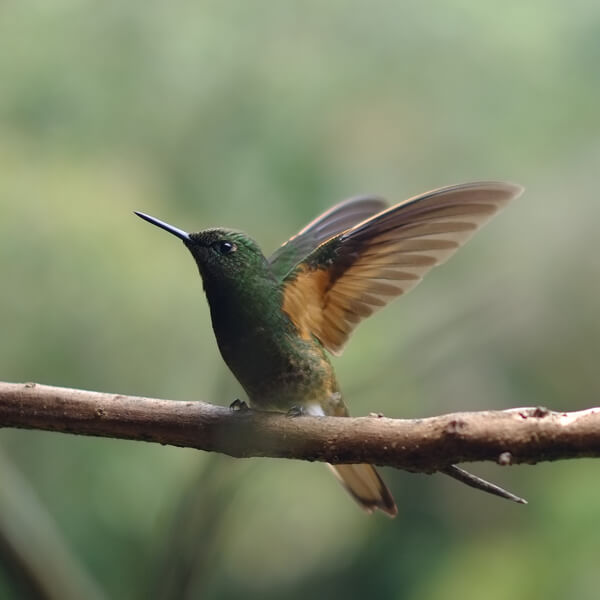

Most species (about 300) of hummingbirds live in Central and South America, but about 26 species visit the U.S. during Spring. Their northern migration depends on the flowering times of native plants, so climate change can affect this synchronization. One species in particular, Anna’s hummingbird, calls Cabrillo National Monument home year-round. Another species, the Calliope hummingbird, typically makes its appearance in April. This species is the smallest bird in the U.S. barely more than three inches in length. Hummingbirds can hover motionless in the air, but are able to fly forward, backward, straight up, or straight down. They are called hummingbirds because the wing architecture and the rapid beat of their wings cause an audible hum when they fly.
Situated on the Yellowstone Caldera, the park has an expansive network of geothermal areas including boiling mud pots, vividly colored hot springs such as Grand Prismatic Spring, and regularly erupting geysers, the best-known being Old Faithful. The yellow-hued Grand Canyon of the Yellowstone River contains several high waterfalls... Read More
This park and the co-managed state parks protect almost half of all remaining coastal redwoods, the tallest trees on earth. There are three large river systems in this very seismically active area, and 37 miles (60 km) of protected coastline reveal tide pools and seastacks. The prairie, estuary, coast, river, and forest ecosystems contain a wide... Read More
Grand Teton is the tallest mountain in the Teton Range. The park's historic Jackson Hole and reflective piedmont lakes teem with endemic wildlife, with a backdrop of craggy mountains that rise abruptly from the sage-covered valley. Grand Teton National Park is an almost pristine ecosystem and the same species of flora and fauna that have existed... Read More
Yosemite features sheer granite cliffs, exceptionally tall waterfalls, and old-growth forests at a unique intersection of geology and hydrology. Half Dome and El Capitan rise from the park's centerpiece, the glacier-carved Yosemite Valley, and from its vertical walls drop Yosemite Falls, one of North America's tallest waterfalls at 2,425 feet (739 m) high... Read More
Although wolf packs once roamed from the Arctic tundra to Mexico, loss of habitat and extermination programs led to their demise throughout most of the United States by early in the 1900s. In 1973, the US Fish and Wildlife Service listed the northern Rocky Mountain wolf (Canis lupus) as an endangered species and designated Greater Yellowstone as one of three recovery areas. From 1995 to 1997, 41 wild wolves from Canada and northwest Montana were released in Yellowstone National Park. As expected, wolves from the growing... Read More
The blooming of the cherry trees around the Tidal Basin in Washington, D.C. has come to symbolize the natural beauty of our nation's capital city. The famous trees, a gift of Japan in 1912, signal Washington's beginning of spring with an explosion of life and color that surrounds... Read More